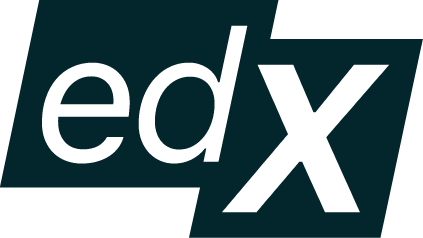
A strong resume communicates your qualifications and sets you up for career success. Your resume is your chance to impress an employer with your skills and accomplishments. A resume that focuses on results, uses dynamic language, and appears organized, clean, and free of mistakes will allow you to compete triumphantly for the opportunities you want.
This guide walks you through the resume writing process so you can compete in the job market with an effective resume that gets you interviews.
This guide is a complete and in-depth look into resume writing. Read straight through, or use the agenda below to jump between topics.
- What is a resume?
- Why do employers care about a resume?
- How do I set myself up for success?
- How do I write an effective resume?
What is a resume?
A resume or CV is a formal document that provides an overview of your professional qualifications, including your relevant work experience, skills, education, and notable accomplishments. Usually paired with a cover letter, a resume helps you demonstrate your abilities and convince employers you’re qualified and hireable.
Think of your resume as an advertisement of yourself. It emphasizes your most relevant experience and skills and highlights your strengths and accomplishments. The purpose is to show employers you’re qualified for a position and convince the employer to offer you an interview.
Why do employers care about a resume?
A resume is important to employers because it helps them immediately see your most attractive and relevant skills. A resume is also a basic requirement for most job applications. As such, it helps employers determine your eligibility and decide whether to invite you for an interview. Essentially, your resume is your first point of contact with an employer; therefore, it serves as an employer’s first impression of you as a potential employee.
Employers are on the hunt for candidates that stand out in a sea of resumes. When you take the time to craft a resume that tells an employer exactly how you measure up to their specifications, it helps them understand your value.
How do I set myself up for success?
When developing a resume, the most impactful strategy is tailoring your resume based on the employer’s needs and requirements. Recruiters and hiring managers spend less than 10 seconds reviewing your resume. They are scanning for keywords and phrases that align with the opportunities they’re looking to fill.
A quality job description is packed with keywords, phrases, and skills to measure if an applicant is well-suited for a position. They’re giving you the answer key! You can quickly increase your chances of being noticed by highlighting words or statements that stand out and infusing them throughout your resume.
Expert advice
“You are essentially presenting yourself in a form of written communication when developing your resume. The way you convey the information will be an example of this skill. You want your resume to be concise and clear, adopting the correct format and professional tone.“
– Nicole P., career expert at edX

Here are a few key steps for tailoring your resume:
- Professional summary – Some of your bullet points may stay the same; however, highlight specific skills from the job description in the summary.
- Experience section – Change/edit your work history to demonstrate how you’ve shown the desired/required qualifications. Be sure each bullet point is impactful and follows the formula presented in step 4 below.
- Skills section – Update/tailor your skills section to align with a specific job description or multiple job descriptions. Make it comprehensive but succinct.
- Software/Platform/Language – If the description notes industry-specific skills that you have, be sure to include them throughout your resume.
Remember, a tailored resume attracts the human eyes of recruiters and hiring managers. In addition, it gets you past the technical eyes of the applicant tracking system (ATS). To learn more about the ATS, check out our Applicant tracking system guide.
How do I write an effective resume?
Writing an effective resume can be a daunting task; however, a little preparation goes a long way. Preparation is key to writing a resume that stands out. Before you begin drafting your resume, you should take some time to gather the essential information you’ll need. Having your essential information ready will save you time and ensure you put your best foot forward.
Another part of preparing to write your resume is doing a bit of research. To know what essential information to gather, you will need to know more about the industry or types of roles you’re seeking. So take some time to read interesting job descriptions, learn about companies that interest you, or talk to different people to learn more about opportunities you want to pursue. This fact-finding mission will inform the essential information you need to gather to write an effective resume.
Start by making a list of the following important information:
- Significant accomplishments from previous jobs. If you don’t have any work experience, consider accomplishments from your courses or other experiences such as volunteer work or community affiliations.
- Professional and technical skills gained from work or volunteer experience as well as those gained through your coursework or personal experience.
- Employers’ names, dates of hire, locations, job titles, and responsibilities.
- Educational credentials such as certificates, college degrees, professional certifications or licenses.
- Awards and honors from your work or education.
Now that you’ve prepared your information, you can start writing your resume. In this step, you should begin formatting your header, which includes your name and contact details. Here’s what to include in your resume header:
- Full name – Your name should stand out, but the text size should be no larger than 18 pt.
- Phone number – Proofread the phone number for accuracy and ensure the outgoing voicemail message is professional and states your name.
- Professional email address – Consider using Gmail or Outlook instead of Hotmail, Yahoo, AOL, or university email.
- City, State, ZIP/Postal code – Do not include your full mailing address.
- Full hyperlinks – To your LinkedIn, GitHub, website, or portfolio, if applicable.
The summary section of your resume is very important because it is the first thing recruiters and hiring managers will read. It summarizes your qualifications for a specific role and tells employers why you’re the best candidate. In short, it answers the question, “Why should I hire you?” or “Why are you the best candidate for the job?”
Your summary should be compelling, concise, and clear. It should be tailored to the job description, citing keywords and requirements for the role. Limit your summary to 3-5 sentences to preserve space on your resume.
Include any combination of the following details in your summary:
- Background experience that connects to the role you are pursuing
- Two to three transferable skills (e.g., logistics, task monitoring, communication, project lifecycle management)
- Cite no more than ten years of related experience
- Accomplishments, recognitions, and/or awards
- Training or certificates
Expert advice
“Arrange your resume according to what employers value and your experience level. After the summary section, resumes will include a variety of section headings. If you are new to your field or a recent graduate, your next section might be projects or skills in order to highlight relevant information. If you have relevant experience, your next section will be Professional Experience or Work History. As long as employers are seeing your most qualifying details as quickly as possible, you are on the right track.”
– Tramaine I., career expert at edX

Arrange your professional experience section in reverse chronological order, starting with your most recent role and going back no more than 7-10 years. This section should be highly correlated to the career path you’re pursuing. Focus on highlighting transferable skills employers in your field need and will find attractive.
For this section, you will need the following information for each role:
- Your job title
- The company name
- The company location (city and state)
- Your dates of employment
- A brief summary of your job description (1-3 sentences)
- Three-to-five bullet points with your top work accomplishments
Your professional experience section should give employers a glimpse into what they can hope to gain by hiring you. Each bulleted statement should begin with an action verb and be concise, direct, and accomplishment-focused. Also, try to quantify your experience as much as possible using numbers to describe the results or impact of your work. Let’s learn more about writing effective bullets for your professional experience section.
Writing effective resume bullets
Bullet points in your professional experience section are the meat and potatoes of your resume. This is the section employers will immediately gravitate toward:
- Do you meet the desired/required qualifications?
- How have you demonstrated the skills they are looking for?
- How have you added value to employers in the past?
To convey these elements, focus on adding context and outcomes to each bullet point using the following formula: Action Verb + Situation/Task = Results or Impact.
For example, note the difference in the following three bullet points:
- Action – Onboarded new staff members.
- Action + Task – Onboarded and provided ongoing professional development to 15+ new staff members.
- Action + Task + Results – Onboarded and provided ongoing professional development to 15+ new staff members resulting in a 90% reduction in employee turnover.
When developing a resume, we highly recommend including a skills section, whether it’s at the beginning or near the end of your resume. Not only will this highlight your strengths, but it will also help you pass the applicant tracking system (Check out our Applicant tracking system guide for more information on these systems).
When thinking about what to put in the skills section, aim for transferable and industry-specific skills. Add relevant skills gained from your work experience and those gained from coursework, volunteer work, or personal experience. When including technical skills, make sure they conform to the standard spelling and style of the industry. Read the job description carefully for key skills to add to your resume.
The education section of your resume can include degrees or certificates. List your education in reverse-chronological order. To present this information accurately, your education section must have the following:
- The name of your college, school, or training program
- City and state of the school
- The year you completed your program of study. If you are currently attending, then write the expected graduation date
- The type of degree/certificate you received or expect to receive and the program
Do not use acronyms or abbreviations when writing your degree or certificate names. Instead, spell out the entire degree or certificate title so it is recognized by the recruiter hiring manager, and the ATS.
Most resumes will have the standard resume heading and section titles such as Summary, Professional Experience, Skills, and Education. However, other resumes may need additional sections to include relevant and important information. Here are some other heading titles to keep in mind:
- Additional experience – Use this section to feature work experience you did not include in the professional experience section due to lack of relevancy. Similar to the professional experience section, focus on highlighting transferable skills. Format this section in the same manner as the professional experience section.
- Projects – Use this section to show hands-on experience in your career field. Include the name of the project, your role if it was a group project, project objectives and outcomes, as well as tools and technology used to complete the project. You should also provide direct links to any work products such as documents, slide decks, or GitHub repositories.
- Volunteer experience – Use this section to draw attention to your relevant community work, especially if you have limited experience in your field. Format this section in the same manner as the professional experience section.
- Professional affiliations – Include this section if you are a member of a relevant professional organization. Include the name of the organization, your title, and the dates of your membership.
- Publications – Include this section if you had any authoritative work published (or about to be published). You can include trade conference presentations, books or chapters, articles in trade magazines, or publications in industry journals. Add the title of your work/publication, the name of the conference, journal, or magazine, dates of publication. And a link to the work if applicable.
- Certifications, licenses, or training – Include this section if you have earned an industry certification (academic certifications should be listed under Education) or license. Include the title of the certification, or license, name of the certifying body, the date you obtained each certification, and the expiration date of your certification (if applicable). If you have not yet finished the training course, write “In Progress” with the expected completion date.
Expert advice
“Be highly selective when adding additional resume sections. You only have so much real estate on a 1–2 page document, and everything you add must count!”
– Tramaine I., career expert at edX

Typos and grammatical errors are the most common resume mistakes—and deal-breakers for most recruiters and hiring managers. So when writing a resume, reread it thoroughly to ensure that you’ve written everything perfectly and that all your information is correct.
Formatting errors are also a big turn-off for hiring managers. However, you can make a resume easy for them to read by following these simple formatting resume tips:
General guidelines
- Design does not obscure necessary text/content
- Text fills the page without overcrowding
- Balanced margins, between 0.5-1”
- No more than one page if new to the field, two pages if you have extensive experience
- Your name and headlines stand out
- No hanging lines (where just a few words take up an entire line)
- Include written-out URLs for links to work examples or projects. Consider using bit.ly or tinyurl to shorten your URLs if necessary
Professional text
- Font size not less than 10pt and no more than 12pt.
- Consistent and professional font style. It’s okay to use different fonts for the headings and body
- Professional font styles include Arial, Calibri, Cambria, Georgia, Helvetica, and Times New Roman
- Consistent use of bold, italic, and underline; same bullet point style for all lists
Grammar, punctuation, and spelling
- Consistent punctuation throughout
- No grammatical or spelling errors
- No abbreviations or acronyms
Professional tone
- No jargon or slang
- Avoid superlative adjectives like, “great,” “good,” or “awesome”
During your job search, you will tailor your resume for different jobs. As a result, you will likely have several versions of your resume. We recommend developing a consistent naming convention to quickly grab resumes relevant to different opportunities. Then, when you send them to recruiters and hiring managers, they are easily recognized.
Here are a few tips for saving your resume:
- Save your resume as a plain text or Word doc (.docx) file and name it appropriately using a consistent naming convention. Sometimes employers specify in the job description which file type to use; always follow their directions. If they don’t specify a file format, save your resume as a Word document.
- Your resume file name matters. We recommend this formula: First Name-Last Name-Target Job Title-Resume.
And that sums up how to write an effective resume! Here is our General resume sample so you can see our advice in action.



